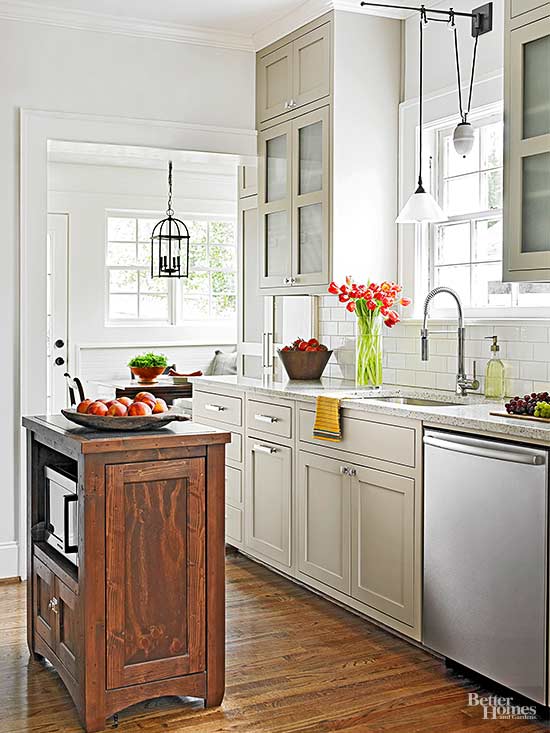7 Common Remodeling Mistakes
 Planning a remodel? Avoid these common and costly remodeling mistakes with these expert tips.
Planning a remodel? Avoid these common and costly remodeling mistakes with these expert tips.
With so many potential remodeling pitfalls, it’s wise to learn from the mistakes of projects past. Knowing what not to do when you take on a remodel will help you make the most of your time and money, and ensure that your project doesn’t end up on the trash heap. To make it easier for you, we’ve compiled a list of the seven most common—and costliest—remodeling mistakes.
- Rushing into your project.
“Develop a good plan, price it, then work it,” says Klaus Herring, associate and project manager for Paul Davis Restoration in Santa Fe, New Mexico. “If you think through your project and you know what you’re looking to do, that’s half the battle.
“When we go into a project, for example, we make a site visit first to get a feel for what our client wants. Then we develop a design and plan that is revised sometimes three or four times. By the end of the revision process, we have a project that is well put together, addresses perceivable eventualities, and will accommodate the unforeseen events that are inevitable in a remodel.”
- Choosing the first contractor you interview.
Take your time. Get several bids. Check each potential contractor’s references, and check with your local Better Business Bureau to see if the contractor has ever been reported as being unethical. Make sure insurance coverage is in place: Every contractor should have business liability insurance, and every subcontractor working for that contractor should be covered under workers’ compensation insurance. Make sure that if the contractor is subcontracting work, those companies are insured. A contractor may carry insurance, but the company that’s actually doing the work might not.
Find a contractor who fits your personality and is open to communication. Look for one who will sit down with you, lay out his or her plan of attack, write it into a contract, show you the breakdown of labor and materials (or the flat rate), then have you sign the contract before the work starts.
- Creating an unrealistic budget.
By “unrealistic,” we mean a budget that doesn’t allow for wiggle room. Generally speaking, you should calculate your budget, then increase it by 20 percent. That should be your budget. The 20 percent cushion will provide some peace of mind when the demolition of your kitchen walls reveals rot in your load-bearing studs, or when it becomes clear that an entire wall needs rewiring. - Being overly frugal.
“Don’t get swallowed up by the penny-pinching mind-set,” says homeowner and do-it-yourself remodeler Philip Bovenkamp of Bellingham, Washington. “Take vinyl flooring: It’s cheaper than ceramic tile, but it isn’t that much cheaper. And if you choose tile, the finished product will really set your house apart from the typical spec house in suburbia. That being said, don’t be foolish when thinking about tackling a challenging project. If something is beyond your skill level, don’t try to save money by doing it yourself; hire a professional.” - Paying more for building materials than you need to.
There are myriad ways to trim your materials costs, says Don Payne, a builder and remodeler in Concrete, Washington. “If you’re not rushed for time, it pays to keep your eyes peeled for the materials you need at garage sales, estate sales, moving sales, flea markets, etc.,” he says. “You can get materials from salvage stores, friends, and business associates. I’ve even developed relationships with drywall companies who give me damaged drywall sheets because it’s cheaper than paying a dump to take it. And it doesn’t have to look cobbled together. If your contractor is at all competent, the finished product will look every bit as good as if you had bought brand-new materials.” - Making your home clash with the neighborhood.
A sure way to sour relationships with your neighbors and potentially harm your home’s resale value is to change your home’s size or facade so it contrasts sharply with the character of other homes in your neighborhood. If you live in an area filled with bungalows, Cape Cods, or other traditional styles, for example, think before you transform your home into a contemporary design statement. Likewise, carefully consider any additions so they don’t overwhelm the houses that border or face your home. It’s a matter of context, says Michael Lander, principal of the Lander Group in Minneapolis. “If you’re in an existing neighborhood that’s rarely a forum for drastic statements of individual taste, do your best to make your home blend into its surroundings,” he says. - Changing your mind. A lot.
Once your project has begun, try your best to stick with your plan, says James Harris, general contractorwith Cedar Mountain Construction in Forest Grove, Oregon. “If you don’t, it can get expensive in a hurry,” he says. “We do walk-throughs with our clients before we hang drywall, because far too often we get people who change their minds after the drywall is up. Usually the changes require tearing out the drywall and starting over, and that’s money that doesn’t have to be spent.”
Harris has noticed that clients don’t change their minds in a vacuum. “We get a lot of people who let themselves be persuaded by their architect, a subcontractor, or a family member to change something that they later regret,” he says. “There needs to be a certain level of sticking to one’s guns.”
See more at http://www.bhg.com/home-improvement/advice/common-remodeling-mistakes/